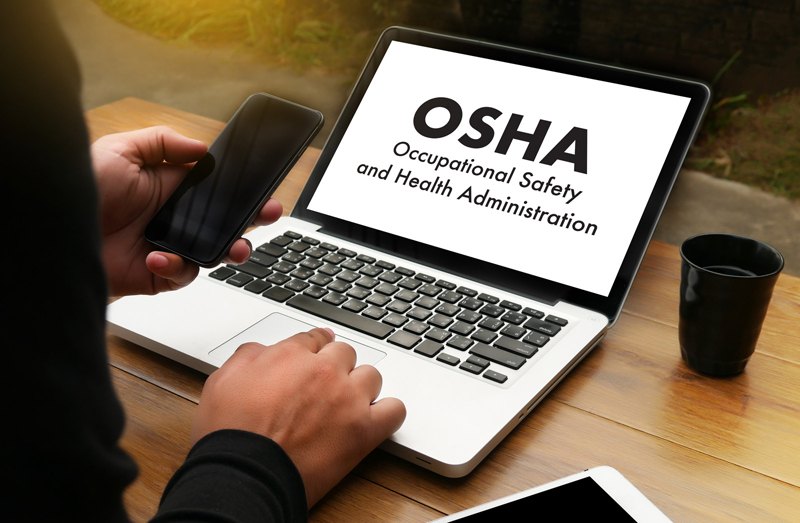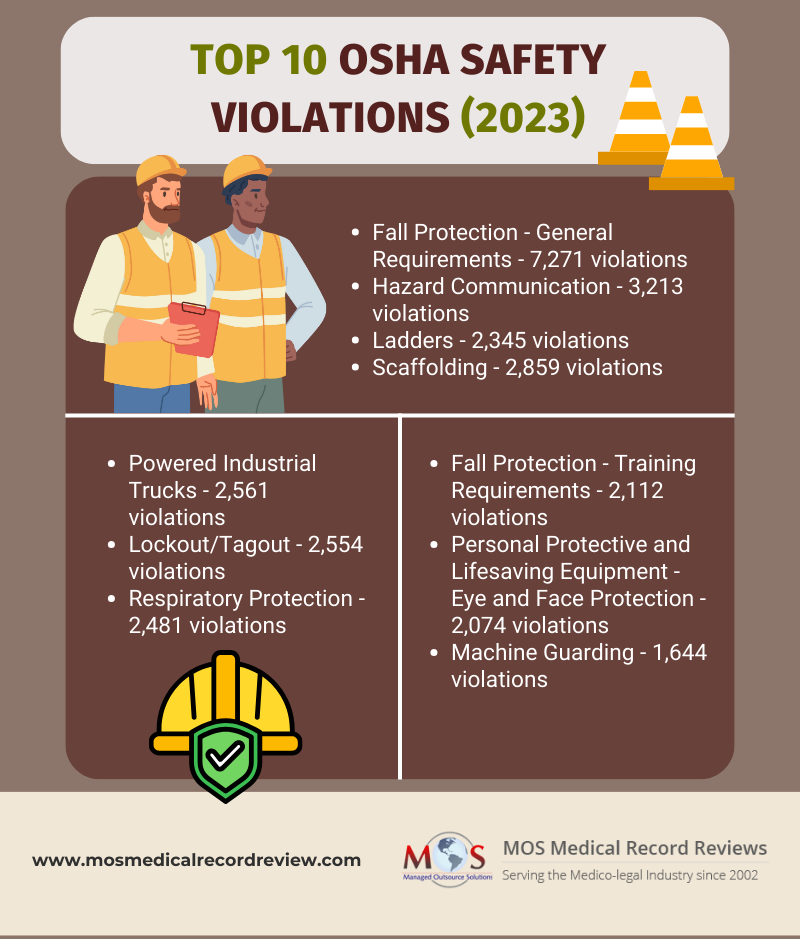Safety violations in the workplace lead to accidents and injuries and increases the number of workers’ compensation claims. There are cases in companies, where workers were left vulnerable without adequate protection. In an unregulated environment, certain employers exposed their workforce to hazardous machinery, harmful chemicals, and harsh working conditions, resulting in alarmingly high rates of workplace injuries and fatalities. Medical review services are crucial for workers’ compensation attorneys, to evaluate the validity of injury claims by comprehensively assessing the injuries, treatment received, and forecast for recovery. These review reports also serve as valuable documentation in legal proceedings, insurance claims, and workers’ compensation cases, offering clarity and accountability. By analyzing medical records, attorneys can effectively prepare for hearings and trials, as well as negotiate settlements, ensuring fair compensation for their clients’ medical expenses, lost wages, and other damages resulting from work-related injuries.
Seeking clarity in the complex medical records for worker’s compensation claims?
Get expert medical review services to organize and review the records.
OSHA Safety Violation
A safety violation is defined as the violation of a particular workplace safety standard, regulation, policy, or rule. These may include both the violation of safety policies implemented by individual workplaces as well as that of the regulatory standards that are enforced within a specific jurisdiction. Workplaces that violate safety policies could be held liable for potential legal as well as administrative penalties.
In 1970, the Occupational Safety and Health Act was enacted to help ensure that employers act responsibly and provide “safe and healthful workplaces for their employees.” Every year the Occupational Safety and Health Administration (OSHA) publishes a list of most frequently cited workplace safety violations.
Employers that violated workplace safety rules could expect to pay a fine for each violation. VENABLE LLP has reported that in 2024, the maximum penalties for OSHA violations increased by approximately 3.2%, from $15,625 to $16,131 per violation for serious and other-than-serious violations and from $156,259 to $161,323 for willful or repeated violations.
Apart from providing a safe work environment, employers are also responsible for ensuring that their employees remain compliant with legally required safety standards. Wherever high-risk jobs are involved, employers have the obligation to demonstrate that their workplace is not in violation of safety standards by hiring a qualified person to certify that the workplace is compliant with specific recognized safety standards.
Common OSHA Violations in the Workplace
- Fall protection (general): These violations involve failures to provide adequate fall protection measures to workers at elevated work areas. This includes unprotected edges, inadequate guardrails, and failure to provide personal fall arrest systems where required. Such violations pose serious risks of falls from heights, leading to severe injuries or fatalities among workers.
- Hazard communication: It refers to the failure in effectively communicating workplace hazards to employees, including inadequate labeling of hazardous chemicals, lack of safety data sheets (SDSs), and insufficient employee training on the handling of hazardous substances. Poor hazard communication can result in accidental exposures, chemical burns, respiratory issues, and other health hazards for workers.
- Ladders: This includes the improper use, maintenance, or design of ladders, leading to falls, slips, or other accidents. Examples are, using ladders for unintended purposes, using damaged or defective ladders, and failure to secure ladders properly. Such violations can result in serious injuries, including fractures and head injuries.
- Scaffolding: These violations involve unsafe scaffolding practices, such as inadequate construction, improper assembly, and lack of proper access. Unsafe scaffolding poses significant risks of falls, collapses, and falling object hazards, leading to serious injuries or fatalities for workers and bystanders.
- Powered industrial trucks: These involve unsafe operation and maintenance of powered industrial trucks, such as forklifts and pallet jacks. Examples include inadequate training for operators, lack of maintenance inspections, and failure to use seat belts. Improper use of powered industrial trucks can lead to collisions, tip-overs, and crushing injuries to operators and nearby workers.
- Lockout/tagout: Failure in implementing proper lockout/tagout procedures can involve risks related to hazardous energy during equipment maintenance or servicing. Failure to effectively lock out machinery can result in unexpected startups, electrocutions, amputations, or other serious injuries to workers.
- Respiratory protection: These violations involve deficiencies in providing appropriate respiratory protection to workers exposed to harmful airborne contaminants such as dust, fumes, or chemicals. Failure to implement adequate respiratory protection measures can lead to respiratory illnesses, lung damage, or other long-term health effects among workers.
- Fall protection (training): This is related to deficiencies in providing proper training to workers exposed to fall hazards. It includes inadequate training on the proper use of fall protection equipment, recognition of fall hazards, and understanding of fall protection systems. Insufficient training increases the likelihood of falls and injuries among workers.
- Personal Protective and Lifesaving Equipment: Eye and face protection: It involves the failure in providing appropriate eye and face protection to workers exposed to hazards such as flying particles, chemicals, or harmful light radiation. Lack of eye and face protection can lead to eye injuries, chemical burns, or other serious facial injuries among workers.
- Machine guarding: These include inadequacies in providing proper guards or protective devices for machinery to prevent contact with moving parts, such as gears, blades, or belts. Failure to implement effective machine guarding can result in amputations, crush injuries, or fatalities among workers operating or working near machinery.
OSHA On-site Consultation Program
OSHA offers a free On-site Consultation Program to reduce the number of injuries and deaths on the job. This is the agency’s primary program for providing small business owners no-cost consultation services to improve workplace safety and deal with hazards effectively without concerns regarding citations or financial penalties. The program is funded by OSHA and run by state grantees that are knowledgeable regarding the specific requirements of the small businesses they serve.
Employers can use this consultation program to facilitate a program that suits their own unique needs. They can develop their own safety and health management programs and reduce workplace injuries as well as workers’ compensation costs while improving worker morale and increasing productivity. Small and medium-sized employers will find this program of significant value. Since the program is a voluntary one, it is the responsibility of employers to get in touch with a consultant in their area. They can locate a nearby consultant online at http://bit.ly/OSHAconsult.
Employers following OSHA requirements can ensure a safe and comfortable workplace for their employees. This will help avoid serious workplace accidents and injuries, and the heavy costs associated with workers’ compensation claims, medical peer review and other investigative processes. Most importantly, employers can benefit from employee satisfaction and in turn improved productivity and efficiency.
Partner with us for reliable medical review services tailored for worker’s compensation attorneys!





